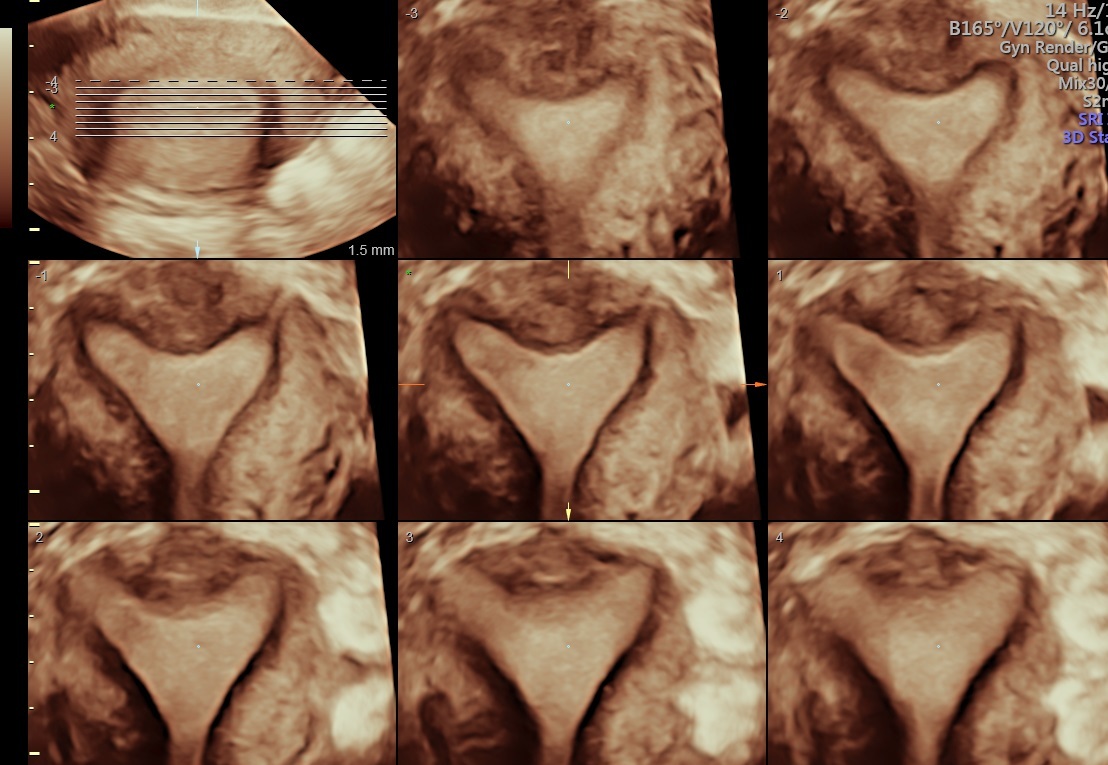Any capital investment in a healthcare practice is a big decision: Physicians must weigh the cost and benefit to the business and, more importantly, to their patients. A 3D ultrasound system is a vital tool for obstetrics, but it's also rapidly gaining prominence as a convenient, cost-saving diagnostic solution for gynecologists at the point of care.
Putting Patients at Ease
3D ultrasound provides a view of the coronal plane, which creates images of the full gynecologic anatomy. With one quick scan, the physician can gather a clip of images that provides a wealth of information not available with a 2D ultrasound system. In some cases, 3D ultrasound can save the patient a trip to another facility for an MRI or CT scan. Instead, she can stay within the office, see the same physician and use a technology she's comfortable with.
"Most women are familiar with having ultrasounds, especially if they've had a baby," said Cindy Smrt, global clinical leader of gynecology at GE. "It's also a bonding experience. It's an opportunity to build confidence in the patient-physician relationship. She can see the images on the monitor and interact with the physician or ultrasonographer."
There's no claustrophobia or radiation with ultrasound, making it an appealing diagnostic tool for many patients. The 3D views are also easier for patients to understand, potentially making them more likely to comply with treatment regimens.
Saving Time and Money With a 3D Ultrasound System
By saving physicians time, a 3D ultrasound system can help a practice see a return on investment sooner. A gynecologist can consult with the patient while performing a scan, rather than scheduling an additional appointment after the patient has received an imaging test elsewhere. This spares physicians the time it would take to refer patients and coordinate appointments. It also makes it easy to share images when necessary.
"A 3D ultrasound gives physicians the opportunity to build practice loyalty by providing efficient and comprehensive answers, increase referrals by offering 3D ultrasound technology, and maintain patients by providing a full-service experience," Smrt said.
Full service saves patients time and money as well, increasing the likelihood that they will return to the practice and refer their friends. Convenience is one of the top factors people consider when choosing healthcare providers. In fact, an Advisory Board survey found that the ability to perform lab tests or X-rays in-house was the second-most important attribute consumers looked for when shopping for primary care.
Essentially, patients want to be seen promptly, undergo tests on-site and receive diagnoses immediately. They don't want to make additional appointments — or incur additional copays — and spend days anxiously awaiting results when there's a better option.
Increasing Accuracy
When it comes to providing patients with answers, the detailed images and multiple views in the 3D ultrasound improve diagnostic accuracy. The physician can confirm correct IUD placement, diagnose pelvic floor disorders and identify congenital anomalies with greater confidence.
Enhanced 3D features allow for an easy transition from 2D to 3D imaging. Features such as Tomographic ultrasound imaging (TUI) allow gynecologists to see a series of images in a layout similar to CT or MRI. In one short scan, the physician can examine the anatomy and pathology of the pelvis for rapid assessment. Meanwhile, OmniView allows the user to simply draw a line across planes for a precise view of the area in question.

TUI Images
Physicians are constantly looking for ways to reduce costs and save time without sacrificing patient care. Investing in a 3D ultrasound system can do just that, in addition to helping gynecologists strengthen practice loyalty and patient satisfaction.





